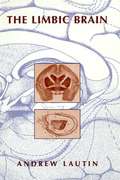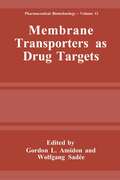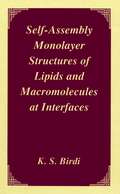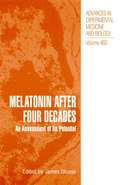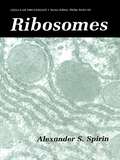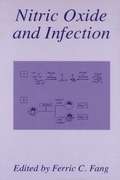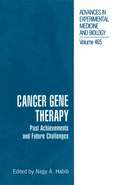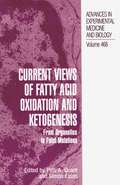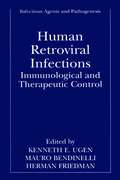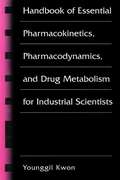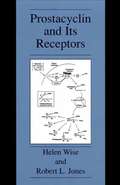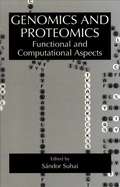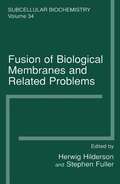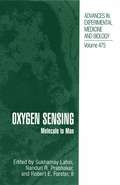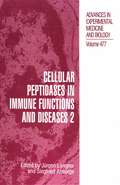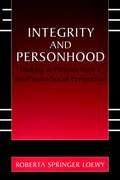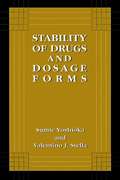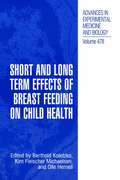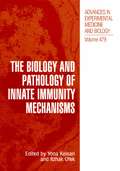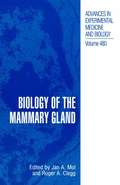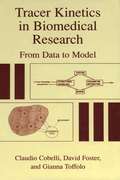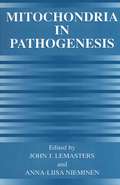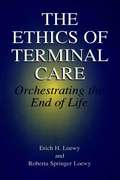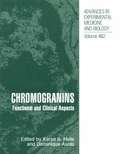- Table View
- List View
The Limbic Brain
by Andrew L. LautinNearly, 50 years ago, Karl Pribram in a discussion section accompanying MacLean’s proposal of a limbic system, criticized the visceral or limbic brain concept as theoretically too vague and cumbersome. In a recent review of the limbic system, Swanson points to Brodal’s criticism that the discovery of connections of limbic structures with virtually all parts of the nervous system render the concept of the limbic system useless, and better abandoned. Additional dissatisfaction surrounding the limbic brain concept stems from the feeling that it is historically inert (an antiquated 19th century construct). In our current age of neural networks, and parallel distributed process it is of little value, merely an historical curio. So why then this int- duction to limbic brain anatomy? We offer several interrelated rationales behind our labors. Recapitulation in the Service of Education: Although concepts had evolved in the second half of this century which effectively overthrew the idea of relatively isolated hemispheric districts (i. e. striatal, cortical, and limbic), parsing the hemisphere into these three districts was an important preliminary step achieved by our forebears in their efforts to understand the large scale structure of the higher mammalian cerebral hemisphere. An examination of how the limbic brain concept came to be provides an opp- tunity to recapitulate the process of exploration, discovery, and und- standing as it relates to one of these principle hemispheric domains.
Membrane Transporters as Drug Targets (Pharmaceutical Biotechnology #12)
by Gordon L. Amidon Wolfgang SadéeBecause progress in the field of transporters has been extraordinary, this volume will focus on recent advances in our understanding of the structure, function, physiology, and molecular biology of membrane transporters. There will be an emphasis on transporters as molecular targets for drug delivery and disposition in the body.
Self-Assembly Monolayer Structures of Lipids and Macromolecules at Interfaces
by K.S. BirdiSelf-assembly monolayer (SAM) structures of lipids and macromolecules have been found to play an important role in many industrial and biological phenomena. This book describes two procedures, namely the STM and AFM, that are used to study SAMs at solid surfaces. K.S. Birdi examines the SAMs at both liquid and solid surfaces by using the Langmuir monolayer method. This book is intended for researchers, academics and professionals.
Melatonin after Four Decades: An Assessment of Its Potential (Advances in Experimental Medicine and Biology #460)
by James OlceseIn the forty years since melatonin's isolation and characterization, a large and multifaceted database has accrued. This book documents the diverse research contributions of most of the major laboratories in the field of melatonin research, as presented in a special conference to mark the 40 year anniversary of the isolation and chemical identification of this hormone. In addition, many chapters by younger scientists provide an exciting glimpse of where melatonin research is heading in the future.
Nitric Oxide and Infection
by Ferric C. FangFamiliarity with nitric oxide is essential to a modern understanding of pathophysiologic mechanisms of infectious disease. Recent research has established nitric oxide and related reactive nitrogen intermediates to be important molecular mediators of diverse physiologic processes such as control of vascular tone, regulation of the immune system, and microbial and tumor cell growth. This book contains chapters by the leading researchers in the field and examines the biology and biochemistry of nitric oxide and its role in a variety of specific infections ranging from sepsis, tuberculosis and malaria to viral myocarditis, influenza, and AIDS.
Cancer Gene Therapy: Past Achievements and Future Challenges (Advances in Experimental Medicine and Biology #465)
by Nagy HabibWith the coming of the new millennium we are witnessing a revolution in our understanding of cancer genetics. These are very exciting times. Today we have at our disposal the technology to diagnose abnormalities in our cancer genes and the means to correct the deficit and very soon we will have the complete sequence of the human genome. With the use of gene chip technology the way doctors will be able to assess patients will change completely. Today we can diagnose abnormalities in ten thousand genes and within a short period of time we will be able to screen through our genome and discover potential abnormalities in our proto-oncogenes, tumour suppressor genes, differentiating genes, apoptotic genes and pro-inflammatory genes. In this book various authors have highlighted specific genes that could be expressed, overexpressed, neutralised or h- nessed to achieve cancer control. The problem of transferring the therapeutic gene into the cancer cell has been partly addressed with major developments in the field of naked plasmid DNA, adenovirus, retrovirus and adeno-associated viruses. However, further improvements are yet to be made to achieve significant gene transfer. Gene expression, in particular specificity of gene transfer, is obviously an important issue and one which is highlighted in this book by the use of specific promoter.
Current Views of Fatty Acid Oxidation and Ketogenesis: From Organelles to Point Mutations (pdf) (Advances in Experimental Medicine and Biology #466)
by Simon Eaton Patti A. QuantHuman Retroviral Infections: Immunological and Therapeutic Control (Infectious Agents and Pathogenesis)
by Kenneth E. Ugen Mauro Bendinelli Herman FriedmanThe discovery of the human T cell leukemia virus type I in the late 1970s heralded a new era in retrovirology. For the first time, it was demonstrated that a retrovirus could play a role in the development of a human disease, in this case adult T cell leukemia (ATL). Several years later, the acquired immunodeficiency syndrome (AIDS) epidemic began, and it was dem- strated that a retrovirus, originally designated the human T cell lymp- tropic virus type 3, was the causal agent of this syndrome. This virus, later named the human immunodeficiency virus type 1 (HIV-1), has since been extensively studied in terms of its pathogenesis as well as its ability to elicit immune responses. In that time, a tremendous amount of information has been obtained about the virus. Although recent drug regimens have been useful in significantly lowering viral loads and perhaps maintaining an asymptomatic state among individuals infected with HIV-1, an established “cure” for AIDS eludes us. In addition, the effective drug therapies are very expensive, and are not available to infected people in the third world, where greater than 90% of new infections occur. Furthermore, the development of viral resistance against the drug therapies is an additional concern. Despite extensive study, no effective vaccine has been developed. One of the problems in developing an effective vaccine against HIV-1 is the ability of the virus, particularly in the immunogenic envelop glycoprotein, to undergo amino acid hypervariability.
Handbook of Essential Pharmacokinetics, Pharmacodynamics and Drug Metabolism for Industrial Scientists
by Younggil KwonIn the pharmaceutical industry, the incorporation of the disciplines of pharma- kinetics, pharmacodynamics, and drug metabolism (PK/PD/DM) into various drug development processes has been recognized to be extremely important for approp- ate compound selection and optimization. During discovery phases, the identifi- tion of the critical PK/PD/DM issues of new compounds plays an essential role in understanding their pharmacological profiles and structure-activity relationships. Owing to recent progress in analytical chemistry, a large number of compounds can be screened for their PK/PD/DM properties within a relatively short period of time. During development phases as well, the toxicology and clinical study designs and trials of a compound should be based on a thorough understanding of its PK/PD/DM properties. During my time as an industrial scientist, I realized that a reference work designed for practical industrial applications of PK/PD/DM could be a very valuable tool for researchers not only in the pharmacokinetics and drug metabolism departments, but also for other discovery and development groups in pharmaceutical companies. This book is designed specifically for industrial scientists, laboratory assistants, and managers who are involved in PK/PD/DM-related areas. It consists of thirteen chapters, each of which deals with a particular PK/PD/DM issue and its industrial applications. Chapters 3 and 12 in particular address recent topics on higher throughput in vivo exposure screening and the prediction of pharmacokinetics in humans, respectively. Chapter 8 covers essential information on drug metabolism for industrial scientists.
Prostacyclin and Its Receptors
by Helen Wise Robert L. JonesIn addition to its well known anti-platelet and hypotensive properties, prostacyclin activates neuronal receptors in the central, enteric and sensory nervous systems. This volume discusses the properties of prostacyclin receptors in the cardiovascular and nervous systems, as well as in cells involved in inflammatory reactions. The chemistry and pharmacology of prostacyclin mimetics are also explored, higlighting their therapeutic value.
Genomics and Proteomics: Functional and Computational Aspects
by Sándor SuhaiGenome research will certainly be one of the most important and exciting sci- tific disciplines of the 21st century. Deciphering the structure of the human genome, as well as that of several model organisms, is the key to our understanding how genes fu- tion in health and disease. With the combined development of innovativetools, resources, scientific know-how, and an overall functional genomic strategy, the origins of human and other organisms’geneticdiseases can be traced. Scientificresearch groups and dev- opmental departments of several major pharmaceutical and biotechnological companies are using new, innovative strategies to unravel how genes function, elucidating the gene protein product, understanding how genes interact with others-both in health and in the disease state. Presently, the impact of the applications of genome research on our society in medicine, agriculture and nutrition will be comparable only to that of communication technologies. In fact, computational methods, including networking, have been playing a substantial role even in genomics and proteomics from the beginning. We can observe, however, a fundamental change of the paradigm in life sciences these days: research focused until now mostly on the study of single processes related to a few genes or gene products, but due to technical developments of the last years we can now potentially identify and analyze all genes and gene products of an organism and clarify their role in the network of lifeprocesses.
Fusion of Biological Membranes and Related Problems: Subcellular Biochemistry (Subcellular Biochemistry #34)
by Stephen Fuller Herwig J. HildersonMembrane fusion and targeting processes are tightly regulated and coordinated. Dozens of proteins, originating from both the cytoplasm and membranes are involved. The discovery of homologous proteins from yeast to neurons validates a unified view. Although much is known about the interfering proteins, the events occurring when two lipid bilayers actually fuse are less clear. It should be remembered that lipid bilayers behave like soap-bubbles fusing when meeting each other. In this respect interfering proteins should be considered as preventing undesirable and unnecessary fusion and eventually directing the biological membrane fusion process (when, where, how, and overcoming the activation energy). In this latest volume in the renowned Subcellular Biochemistry series, some aspects of fusion of biological membranes as well as related problems are presented. Although not complete, there is a lot of recent information including on virus-induced membrane fusion. The contributors of the chapters are all among the researchers who performed many of the pioneering studies in the field.
Oxygen Sensing: Molecule to Man (Advances in Experimental Medicine and Biology #475)
by Sukhamay Lahiri Nanduri R. Prabhakar Robert E. Forster IIProceedings of the XIVth International Symposium on Arterial Chemoreception, held June 24-28, 1999, in Philadelphia, Pennsylvania. This volume, containing the proceedings of the fourteenth biannual ISAC meeting presents a new departure from their traditional focus on arterial chemoreceptors and their functions, in the expansion to include the study and discussion of oxygen sensing in other tissues and cells, and the genes involved. Bringing together scientists from cellular and systemic boundaries of physiology, working at the interface of cellular and molecular biology, this book, containing new physiological and biochemical perspectives.
Cellular Peptidases in Immune Functions and Diseases 2: (pdf) (Advances in Experimental Medicine and Biology #477)
by Jürgen Langner Siegfried AnsorgeIntegrity and Personhood: Looking at Patients from a Bio/Psycho/Social Perspective
by Erich E.H. LoewyThis text examines the dominant ways of looking at patient/clinician relationships in healthcare. By challenging these dominant views the author can explore presuppositions that are defective. She further explains how they come to be so readily and uncritically held and reinforced; and, why their implications can have such a profound affect on how we think and act. Using the methodology of philosopher, John Dewey, the author proposes an alternative bio/psycho/social approach to understanding the patient/clinician relationship and for resolving increasingly common bioethical issues that arise in healthcare settings.
Stability of Drugs and Dosage Forms
by Sumie Yoshioka Valentino J. StellaDrug products are complex mixtures of drugs and excipients and, as such, their chemical and physical stability kinetics are complex. This book discusses the stability of these dosage forms with preformulation studies through to the studies on the final products. The book is intended for graduate students, researchers and professionals in the field of Pharmaceutics and Pharmaceutical Chemistry.
Short and Long Term Effects of Breast Feeding on Child Health (Advances in Experimental Medicine and Biology #478)
by Berthold Koletzko Olle Hernell Kim Fleischer MichaelsenProceedings of the 9th International Conference of the International Society for Research in Human Milk and Lactation (ISRHML), October 2-6, 1999, Bavaria, Germany. The quality of infant feeding is of major importance for child health development and well being, and breast feeding is the natural form of supplying food to the infant and is considered to be ideally adapted to the needs of both mother and child. This contributed volume therefore, brings together the research on the physiological foundations and on the biological effects of breast feeding, both short and long term. This book contains the work of scientists from over thirty countries, many of whom are leading researchers in their fields, and details papers presented by the invited speakers of the conference and short summaries of presentations of original research results.
The Biology and Pathology of Innate Immunity Mechanisms (Advances in Experimental Medicine and Biology #479)
by Yona Keisari Itzhak OfekIn recent years increased scientific attention has been given to immediate defense mechanisms based on non-clonal recognition of microbial components. These mechanisms constitute the innate immunity arm of the body s defense. Identification of pathogens by these mechanisms involves primarily receptors recognizing sugar moieties of various microorganisms. Innate immunity based mechanisms are essential for the existence of multicellular organisms. They are evolutionarily conserved and designed to provide immediate protection against microbial pathogens to eradicate infection. Activation of innate immunity is crucial for transition to specific immunity and for its orientation, and to assist the specific immune response in the recognition of pathogens and their destruction. Innate immunity is regularly involved in the arrest of bacterial, mycotic, viral and parasitic infections, giving the specific immune response time to become effective. It becomes critically essential in immunocompromised patients who fail to mount specific immune responses due to congenital or acquired immunodeficiencies as a result of chemotherapy, dialysis, immunosuppressive drugs, or HIV infection. The Innate Immunity arsenal constitutes polymorphonuclear and mononuclear phagocytes, mast cells, the complement system, Natural Killer cells, antimicrobial peptides, and presumably a subset of T lymphocytes with TCRl receptors.
Biology of the Mammary Gland (Advances in Experimental Medicine and Biology #480)
by Roger A. Clegg John A. MolProceedings of the European Cooperation in the Field of Scientific and Technical Research (COST 825) Symposium on Mammary Gland Biology, held September 16-18, 1999, in Tours, France. It is difficult to overstate the evolutionary and functional significance of mammary tissue in biology. Substantial progress has been made by researchers in various disciplines, particularly over the last fifteen years, towards realizing the potential of this tissue to yield powerful experimental models for morphogenesis and tissue development; for cellular differentiation; for the biosynthesis and secretion of proteins, lipids, small molecules and inorganic salts; and for the coordination and regulation of these processes. More recently, the possibility of exploiting the secretory epithelial cells of mammary tissue as `cell factories' has become a reality and the recombinant production by lactating animals of an increasing number of proteins, valuable both in the pharmaceutical and `nutraceutical' fields, is in progress or under development. Also in this sphere of agricultural production, genetic as well as nutritional technologies are under investigation and exploitation to optimize milk composition for various end-uses - for instance in food process and manufacture. The possibilities of deriving health benefit from the bioactive properties of some of the minor constituents of milk are emerging to counter the highly-publicized negative health impact of excessive consumption of saturated animal fats. In human nutrition and medicine, the mammary gland is both a source of nutrition to the neonate and a potential health threat to the adult female - breast cancer remains the major single cause of female mortality in most developed countries. This volume provides a unique glimpse into our understanding, at the cutting edge of a variety of disciplines, of this versatile and extraordinary tissue, at the birth of the twenty-first century.
Tracer Kinetics in Biomedical Research: From Data to Model
by Claudio Cobelli David Foster Gianna ToffoloCommunity-Acquired Pneumonia
by Thomas J. MarriePneumonia (along with influenza) is the sixth leading cause of death in adults. About 4 million adults develop pneumonia each year in the US, resulting in 64 million days of restricted activity, 39 million days of bed confinement, and 10 million days of lost work. Yet the admission rates to hospital, length of stay, investigations, antimicrobial therapy and prevention strategies vary greatly from one geographic area to the next, and the scientific basis for many of our management strategies for pneumonia is weak to nonexistent. There are over 100 microbial agents that can cause pneumonia and many of these, especially Streptococcus pneumoniae, Group A streptococcus, and Staphylococcus aureus, are in a state of flux in terms of changing antimicrobial resistance. This book is designed to provide new information about pneumonia and identify critical research questions that will come to the fore as we enter the 21st century.
Mitochondria in Pathogenesis
by John J. Lemasters Anna-Liisa NieminenMitochondria are organelles in each cell outside the nucleus and are the energy source of all cells. As such, they are crucial to the healthy functioning of cells. Recent research has shown that mitochondrial dysfunction underlies a broad spectrum of disease, from maternally inherited genetic disorders to metabolism defects, aging, stroke, and neurodegenerative diseases such as Parkinson's, Alzheimer's, and Lou Gehrig's disease. This book brings together top researchers whose work in examining the pathophysiologic processes will lead to new strategies for prevention and treatment.
The Ethics of Terminal Care: Orchestrating the End of Life
by Erich E.H. LoewyIn this volume the authors examine some of the medical social and psychological conditions which affect the way we die. Important topics covered include attitudes toward death; suicide, assisted suicide and euthanasia; hospice and pain management. This volume will be of interest to all who work with terminally ill patients.
Chromogranins: Functional and Clinical Aspects (Advances in Experimental Medicine and Biology #482)
by Karen B. Helle Dominique AunisProceedings of Session VII of the Tenth International Symposium on Chromaffin Cell Biology, held August 25-28, 1999, in Bergen, Norway, and a post-symposium workshop on Chromogranins: from Fundamental Physiology to Clinical Aspects, held August 28, 1999, on board the coastal steamer MS Richard With. This book deals with the chromogranins, secretory prohormones from the diffuse neuroendocrine system. The current concepts of their structure, biogenesis, biosynthesis, secretion, tissue-specific distribution, and processing are presented for the first time all within one volume, with emphasis on the functional aspects of the biologically active sequences and the clinical perspectives of the circulation prohormones.
